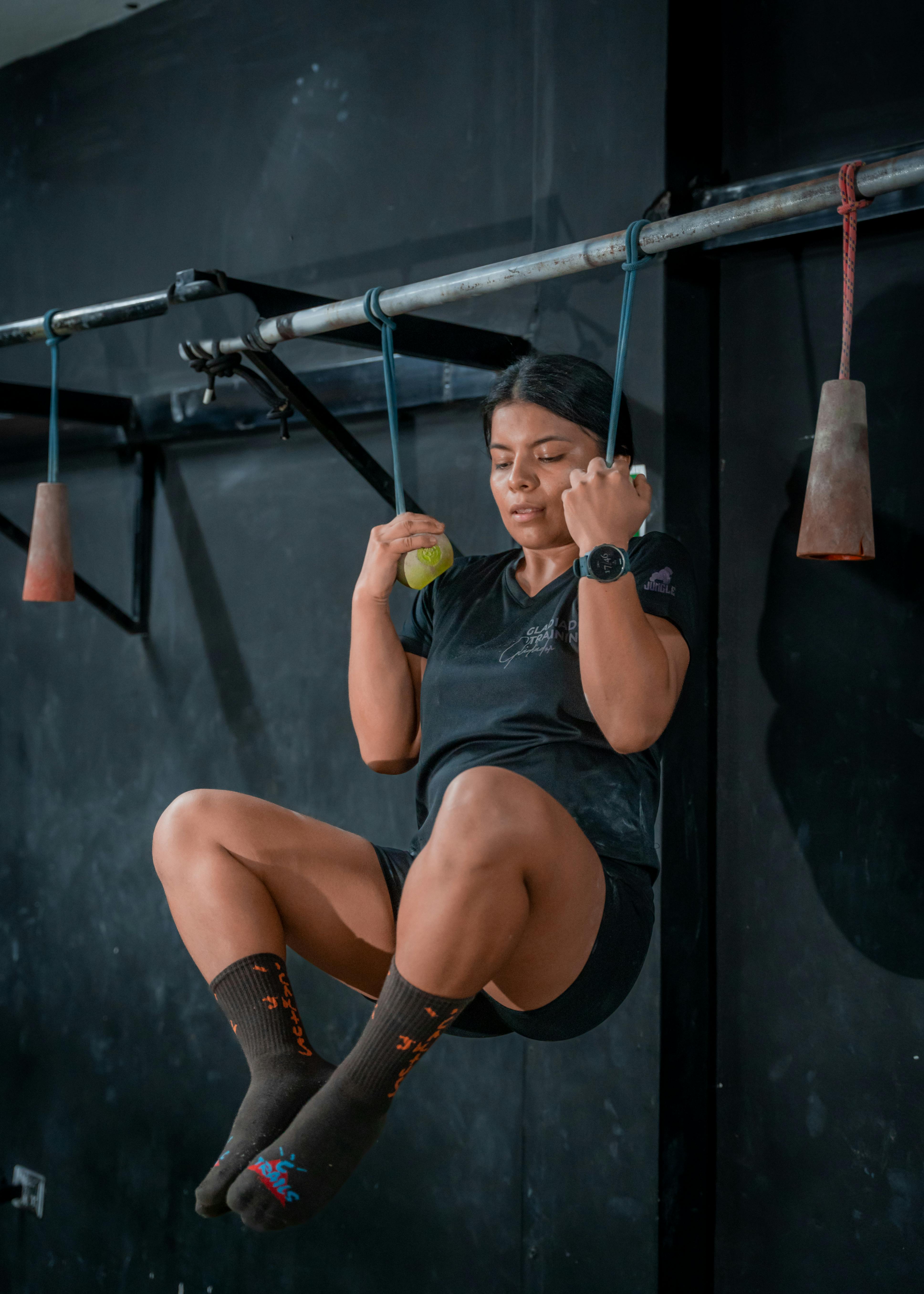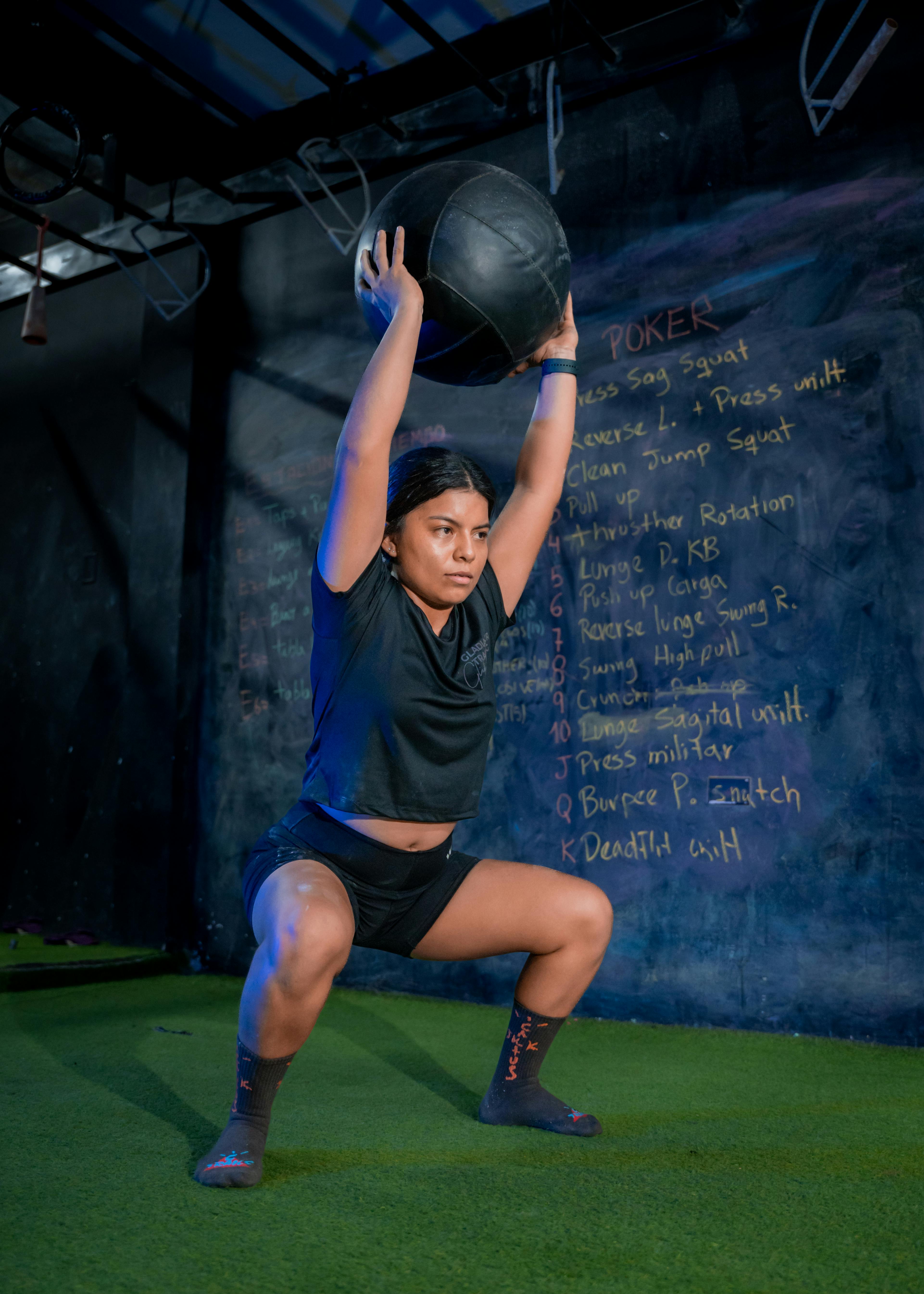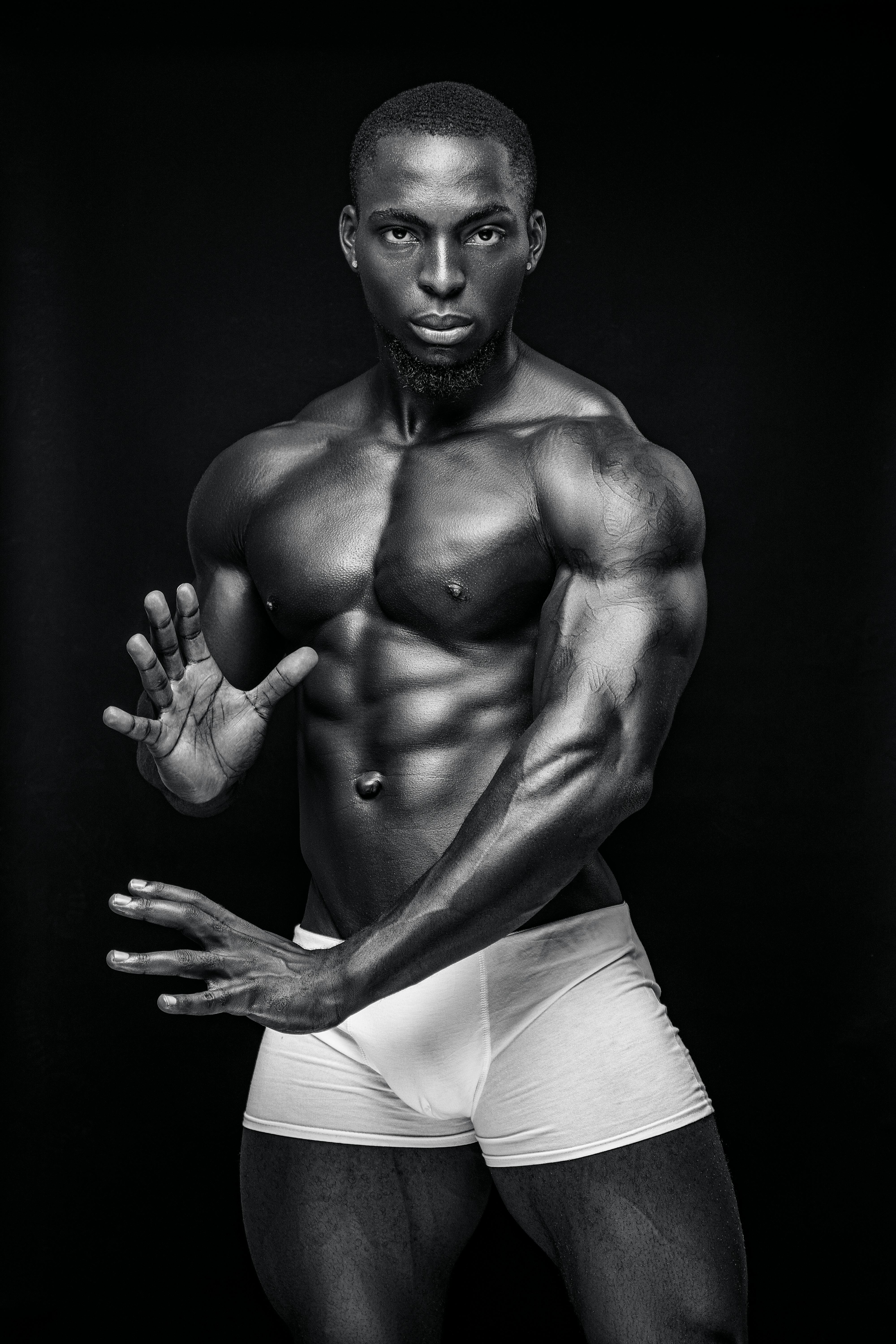How To Properly Use A Rowing Machine At The Gym
Are you excited to try out the new rowing machine at the gym? Rowing machines can be a fun and effective way to get a good workout. But before you jump on and start rowing like crazy, it’s important to know how to use the machine properly. In this article, you’ll learn all about how to set up the rowing machine and use it correctly so you can get the most out of your workout. Whether you’re a beginner or an experienced rower, these tips will help you make the most of your time at the gym. So let’s get started and discover the proper way to use a rowing machine!

Setting Up the Rowing Machine
Adjusting the Foot Straps
To start using the rowing machine, you need to make sure the foot straps are adjusted properly. Sit on the seat and place your feet in the foot straps. Make sure they are snug but not too tight. This will help keep your feet secure while rowing and prevent slipping.
Setting the Resistance Level
The resistance level on the rowing machine determines how hard it is to row. If you’re just starting out, it’s a good idea to start with a lower resistance level and gradually increase it as you get more comfortable and stronger. You can adjust the resistance level by using the buttons or levers on the machine, depending on the type of rowing machine you have.
Positioning the Seat and Handle
Once the foot straps are adjusted and the resistance level is set, you need to position the seat and handle correctly. Sit on the seat and slide it forward or backward so that your knees are slightly bent when your feet are in the foot straps. The handle should be within easy reach and comfortable to hold.
Securing the Feet
Before you start rowing, make sure your feet are securely strapped in the foot straps. This will help you maintain stability and prevent your feet from slipping while rowing. Double-check that the straps are tight enough to hold your feet in place but not so tight that they are uncomfortable.
Understanding the Rowing Technique
The Catch Position
The catch position is the starting position of the rowing stroke. Sit on the rowing machine with your knees bent and your shins vertical. Lean slightly forward from your hips, keeping your back straight and your arms extended. This is called the catch position because it’s where you “catch” the water with the oar.
The Drive Phase
The drive phase is where you use your legs, core, and back to push against the foot straps and propel yourself back. Begin the drive by extending your legs, pushing against the foot straps. As your legs straighten, lean back slightly and engage your core and back muscles. Your arms should remain extended during this phase.
The Finish Position
The finish position is the end of the rowing stroke. It’s where you pull the handle towards your chest and your torso is leaning back slightly. Your legs should be extended, and your body should be in a slight reclined position. This is when you finish the stroke and transfer the power from your legs and core to your arms.
The Recovery Phase
The recovery phase is the transition from the finish position back to the starting position. It’s important to control your movements during this phase to maintain proper technique. Start by extending your arms forward, followed by leaning your torso forward. Finally, bend your knees and slide the seat forward to return to the catch position.

Proper Body Positioning
Sitting Tall and Straight
When using the rowing machine, it’s essential to maintain a tall and straight posture. Sit upright on the seat with your spine in a neutral position, avoiding any slouching or rounding of the back. This helps engage your core muscles and ensures proper alignment throughout the rowing stroke.
Relaxing the Shoulders
It’s important to keep your shoulders relaxed while rowing. Avoid shrugging or tensing them up as this can lead to unnecessary tension and fatigue. Let your shoulders hang naturally and focus on using your legs, core, and back to generate power during the rowing stroke.
Engaging the Core
Engaging your core muscles is crucial for maintaining stability and proper body alignment while rowing. Imagine pulling your belly button towards your spine to activate your core. This will help support your lower back and prevent any unnecessary strain or discomfort.
Bending the Knees
During the rowing stroke, it’s important to bend your knees and then extend them as you push off with your legs. This leg movement is what generates power and propels you back on the rowing machine. When you extend your legs, focus on pushing against the foot straps to maximize the force and efficiency of your rowing stroke.
Correct Hand Placement
Maintaining a Loose Grip
When holding the handle of the rowing machine, it’s important to maintain a loose grip. Avoid gripping the handle too tightly as this can lead to unnecessary tension in your hands, wrists, and forearms. Relax your grip and focus on using your larger muscle groups, like your legs and core, to generate power during the rowing stroke.
Positioning the Hands on the Handle
Place your hands on the handle with a comfortable distance between them. Your hands can be slightly wider than shoulder-width apart, but make sure it feels natural and allows for a full range of motion. Keep your wrists straight and aligned with your forearms to ensure proper joint alignment and minimize the risk of strain or injury.
Avoiding Over-gripping
Avoid the temptation to over-grip the handle. This means not squeezing the handle too tightly or tensing up your hands, fingers, and forearms. Over-gripping can lead to muscle fatigue and unnecessary strain. Focus on maintaining a relaxed grip while still maintaining control of the handle throughout the rowing stroke.

Mastering the Stroke
Starting with the Legs
The rowing stroke begins with leg power. Initiate the stroke by pushing against the foot straps with your legs, driving them away from the machine. This leg drive generates the initial power and sets the momentum for the rest of the stroke.
Engaging the Core and Back
As you extend your legs, engage your core and back muscles to continue the drive phase. Lean back slightly from your hips, keeping your back straight. This engagement of the core and back adds additional power and stability to the rowing stroke.
Finishing with Arms
Once your legs are fully extended, it’s time to involve your arms. Pull the handle towards your chest, bending your elbows and bringing your hands in line with your lower ribs. Use your arms to complete the stroke, but remember that the primary source of power should come from your legs and core.
The Importance of Timing
Timing is crucial to mastering the rowing stroke. The leg drive, core engagement, and arm pull should flow seamlessly together. It’s important to synchronize the movements to optimize power and efficiency. Practice and focus on the timing of each phase of the stroke to maximize your rowing performance.
Setting Your Stroke Rate
Understanding the Stroke Rate
Stroke rate refers to the number of strokes or rowing movements you complete per minute. It’s important to find a stroke rate that feels comfortable for you but also allows you to challenge yourself. Beginners usually start with a lower stroke rate and gradually increase it as they gain experience and fitness.
Using the Monitor Display
Most rowing machines have a display monitor that shows various metrics, including stroke rate. Pay attention to this display to monitor your stroke rate and adjust it as needed. Experiment with different stroke rates to find the one that feels most efficient and effective for your rowing workouts.
Monitoring Your Progress
Tracking your stroke rate over time can help you gauge your progress and fitness level. As you become more skilled and fit, you may find that you can maintain a higher stroke rate without sacrificing form or technique. Consistently monitoring your stroke rate allows you to track your improvements and set new goals for your rowing workouts.
Developing a Rowing Workout
Setting Realistic Goals
When developing a rowing workout, it’s important to set realistic goals that align with your current fitness level and abilities. Start with shorter, simpler workouts and gradually increase the duration and intensity as you get stronger and more comfortable with rowing. Setting achievable goals will help keep you motivated and prevent burnout or frustration.
Warming Up Properly
Before starting any exercise, including rowing, it’s crucial to warm up your muscles and prepare your body for the workout. Spend 5-10 minutes doing dynamic stretches or light cardio exercises, such as jogging or jumping jacks. This will increase blood flow to your muscles, warm them up, and reduce the risk of injury.
Working on Intervals
Interval training is an effective way to challenge yourself and improve your rowing performance. Alternate between periods of higher intensity, where you row faster or increase the resistance level, and periods of lower intensity, where you row at a slower pace or decrease the resistance. This variation in intensity helps build cardiovascular endurance and overall fitness.
Cooldown and Stretching
After completing your rowing workout, take a few minutes to cool down and stretch your muscles. Slow down your rowing pace and allow your heart rate to gradually come down. Then, perform static stretches to target the major muscle groups used during rowing, such as your legs, core, back, and shoulders. Stretching helps improve flexibility, prevent muscle soreness, and reduce the risk of injury.
Common Mistakes to Avoid
Rounding the Back
One common mistake to avoid while using the rowing machine is rounding your back. It’s important to maintain a straight and neutral spine throughout the entire rowing stroke. Rounding the back can lead to poor posture, increased strain on your lower back, and a decrease in the effectiveness of the exercise.
Rushing the Stroke
Another mistake to avoid is rushing through the rowing stroke. It’s important to maintain a steady and controlled pace, focusing on good form and technique. Rushing the stroke can compromise your posture, decrease the power generated, and increase the risk of injury. Take your time and focus on each phase of the stroke.
Using Excessive Force
Using excessive force on the rowing machine can put unnecessary strain on your muscles and joints. Instead of relying on brute strength, focus on proper technique and using the correct muscle groups. Remember that rowing is a full-body exercise, and it’s more about technique and efficiency than sheer force.
Neglecting the Legs
The legs play a crucial role in generating power on the rowing machine. Neglecting to engage your legs fully and relying too much on your arms can lead to an imbalance in your rowing stroke. Focus on driving through your legs and use them as the primary source of power, while still incorporating your core and arm muscles in a coordinated manner.
Safety Considerations
Start Slowly
When starting to use a rowing machine, it’s important to start slowly and gradually increase your time and intensity. Pushing yourself too hard right from the beginning can lead to fatigue, muscle soreness, and even injury. Listen to your body, and if you feel any pain or discomfort, take a break or adjust your technique.
Maintain Proper Form
Proper form is essential for safe and effective rowing. Always focus on maintaining proper posture, engaging the correct muscle groups, and using smooth and controlled movements. If you find that your form is suffering as you fatigue, it’s a good idea to reduce the intensity or duration of your rowing workout.
Use a Spotter if Necessary
If you’re new to rowing or have any concerns about your safety, it’s a good idea to have a trained gym staff member or a knowledgeable friend act as a spotter. They can observe your technique, provide guidance, and ensure that you’re using the rowing machine safely and correctly.
Listen to Your Body
The most important safety consideration is to listen to your body. If something doesn’t feel right or you experience any pain or discomfort, stop and assess the situation. Don’t push through any pain or ignore any warning signs. Rest, seek guidance if necessary, and always prioritize your well-being and health.
Benefits of Rowing Machine Workouts
Full-Body Workout
Rowing machine workouts provide a full-body workout, targeting multiple muscle groups simultaneously. When rowing, you engage your legs, core, back, shoulders, and arms all in one fluid movement. This comprehensive workout helps improve strength, endurance, and overall fitness.
Low Impact on Joints
Rowing is a low-impact exercise, meaning it puts minimal stress on your joints, unlike activities such as running or jumping. This makes it a great option for individuals with joint issues or those who want to spare their joints while still getting a challenging workout.
Improved Cardiovascular Fitness
Rowing is a cardiovascular exercise that gets your heart pumping and increases your lung capacity. Regular rowing machine workouts can improve your cardiovascular fitness, enhance your endurance, and contribute to a healthier heart and lungs.
Strength and Endurance Building
Rowing machine workouts are an excellent way to build strength and endurance. As you push through the resistance and engage multiple muscle groups, your muscles become stronger and more toned. Over time, your endurance will also improve, allowing you to row for longer periods or at a higher intensity.
In conclusion, using a rowing machine at the gym can be a great way to achieve a full-body workout while improving cardiovascular fitness, strength, and endurance. By setting up the machine correctly, understanding the proper rowing technique, maintaining proper body positioning and hand placement, and mastering the stroke, you can make the most of your rowing workouts. Remember to set realistic goals, warm up properly, and incorporate intervals into your workouts for optimal results. Avoid common mistakes, prioritize safety, and listen to your body throughout your rowing journey. With consistent practice and dedication, rowing can become a fun and effective exercise that brings numerous benefits to your overall health and fitness.

Pingback: Which Machine In Gym Burns Most Calories